Pennsylvania - The Keystone State
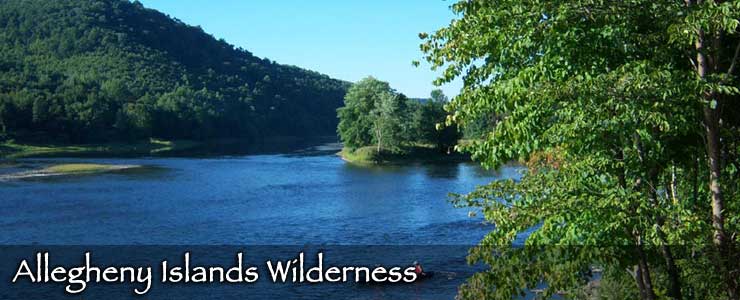
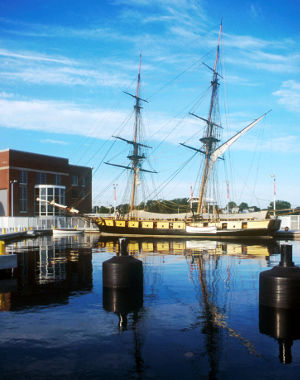
The USS Niagara
The Pennsylvania state ship
Before the Europeans arrived, the area of Pennsylvania was occupied by the Susquehannock, Delaware, Iroquois, Erie, Shawnee and other tribes of Native Americans. Then the Dutch took up residence near what is now Lewes, Delaware in 1631. Sweden established the New Sweden Colony at what is now Wilmington, Delaware in 1638. The Swedes controlled the lower Delaware River but they settled only a few colonists in the area. Then Charles II of England granted the Duke of York a large grant that included the original Virginia Company of Plymouth Grant and other lands. This grant also included nearly the whole of New Netherland, although the Dutch were still in possession of the territory. Three months later, the Duke of York sold what is now New Jersey to John Berkeley and George Carteret for them to establish a proprietary colony. Two months later, the English Navy sailed into New Amsterdam Harbor, convinced the local Dutch authorities of the futility of fighting the English and shortly renamed the place New York (in honor of the Duke of York). Then the Navy sailed south and took Fort Casimir at what is now New Castle, Delaware. That essentially ended Dutch control of the colonies, although the Dutch re-established their authority for a short period of time in 1672-4 during the Third Anglo-Dutch War. The treaty that ended that war returned everything to its previous status quo.
What became Pennsylvania was separated from what was Delaware in 1674. Then in 1681, Charles II gave Pennsylvania to William Penn to repay a dept he owed Penn's father. Shortly after that, William Penn and his representatives took control of Pennsylvania and instituted two major innovations in their governing process: the county commission and guaranteed freedom of religion.
Between 1730 and the passage of Currency Act in 1764, Pennsylvania Colony printed its own paper money. With the Currency Act, Parliament reestablished their ability to collect taxes in the colony by forbidding the use of any legal tender except what came from the British government. Then came the Stamp Act in 1765, another raise in taxes by the Crown. In 1774, the First Continental Congress was convened in Philadelphia with 12 of the 13 American colonies represented. The Second Continental Congress was the group that wrote and signed the Declaration of Independence in Philadelphia in 1776. Then Philadelphia was captured by British troops and Congress fled first to Lancaster, then to York in 1777. It was in York that they drew up the Articles of Confederation. Later they wrote the Constitution of the United States and set the capitol of the new nation in Philadelphia. George Washington and John Adams served most of their terms as President of the United States in Philadelphia until the capitol was permanently moved to Washington, DC in 1800.
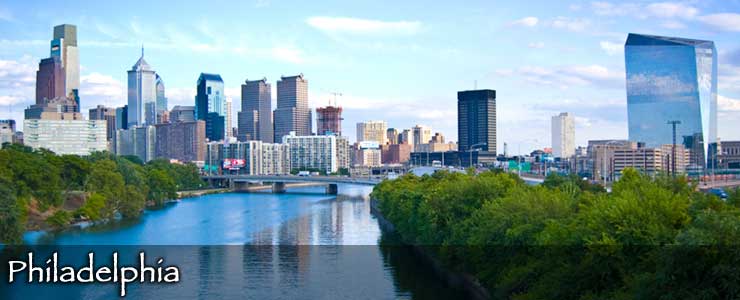
Fast Facts about Pennsylvania
Largest City: Philadelphia
Became a State: December 12, 1787 : 2nd
Highest Point: Mount Davis : 3,213'
Lowest Point: Delaware River: 0'
2020 Pennsylvania Population Demographics
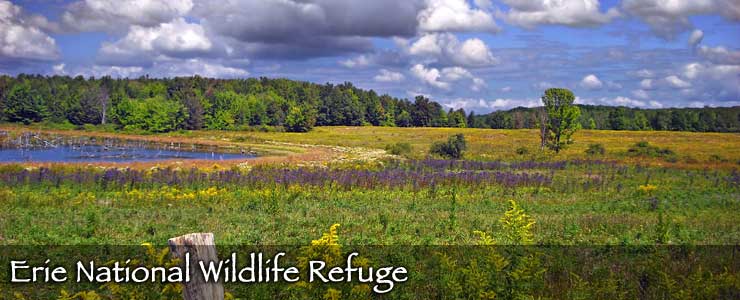
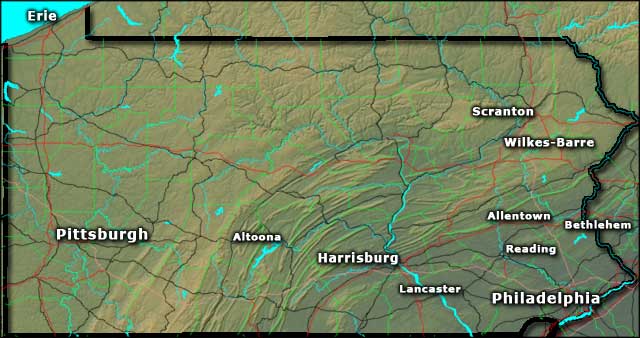
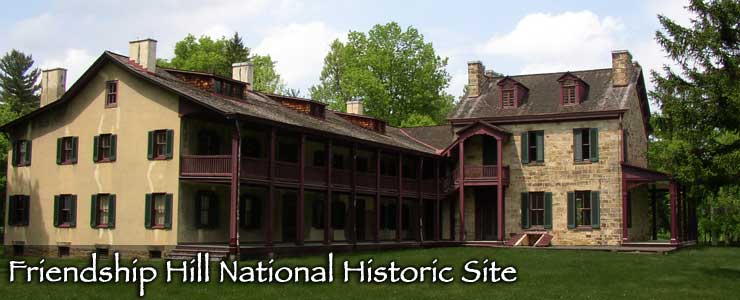
Photo of the Pittsburgh skyline courtesy of Ronald C. Yochum, J, CCA-by-SA 2.5 License
Photo of US Brig Niagara courtesy of Byways.org
Photo of the Philadelphia skyline courtesy of Ed Yakovich
Map courtesy of Cartesia MapArt US Terrain